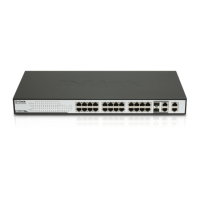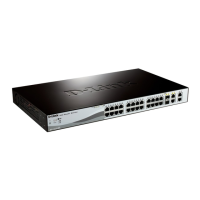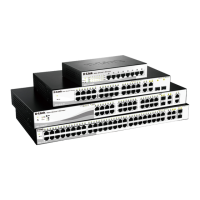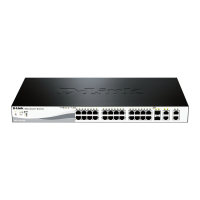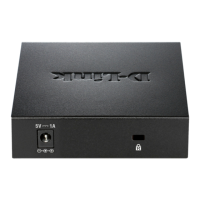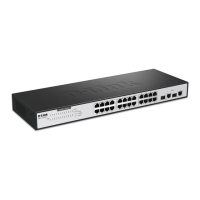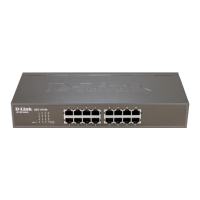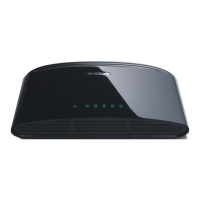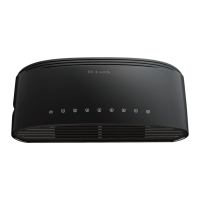5 Configuration D-Link Web Smart Switch User Manual
Figure 66 – Configuration > SNTP Settings > TimeZone Settings
Daylight Saving Time State: Use this drop-down menu to enable or disable the DST Settings.
Daylight Saving Time Offset in Minutes: Use this drop-down menu to specify the amount of time that will
constitute your local DST offset - 30, 60, 90, or 120 minutes.
Time Zone Offset from GMT in +/- HH:MM: Use these drop-down menus to specify your local time zone's
offset from Greenwich Mean Time (GMT.)
DST Annual Settings: Using annual mode will enable DST seasonal time adjustment. Annual mode
requires that the DST beginning and ending date be specified concisely is not in the same month. For
example, specify to begin DST on March 8 and end DST on November 1.
From: Month: Enter the month DST will start on, each year.
From: Day: Enter the day of the week DST will start on, each year.
From: Time in HH:MM: Enter the time of day DST will start on, each year.
To: Month: Enter the month DST will end on, each year.
To: Day: Enter the date DST will end on, each year.
To: Time in HH:MM: Enter the time of day that DST will end on, each year.
Click Apply to implement changes made.
Configuration > Spanning Tree > STP Global Settings
The Switch implements two versions of the Spanning Tree Protocol, the Rapid Spanning Tree Protocol
(RSTP) as defined by the IEEE 802.1w specification and a version compatible with the IEEE 802.1D STP.
RSTP can operate with legacy equipment implementing IEEE 802.1D, however the advantages of using
RSTP will be lost.
The IEEE 802.1w Rapid Spanning Tree Protocol (RSTP) evolved from the 802.1D STP standard. RSTP was
developed in order to overcome some limitations of STP that impede the function of some recent switching
innovations. The basic function and much of the terminology is the same as STP. Most of the settings
configured for STP are also used for RSTP. This section introduces some new Spanning Tree concepts and
illustrates the main differences between the two protocols.
By default, Rapid Spanning Tree is disabled. If enabled, the Switch will listen for BPDU packets and its
accompanying Hello packet. BPDU packets are sent even if a BPDU packet was not received. Therefore,
each link between bridges is sensitive to the status of the link. Ultimately this difference results in faster
detection of failed links, and thus faster topology adjustment.
After enabling STP, setting the STP Global Setting includes the following options:
3
3
9
9
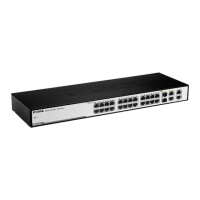
